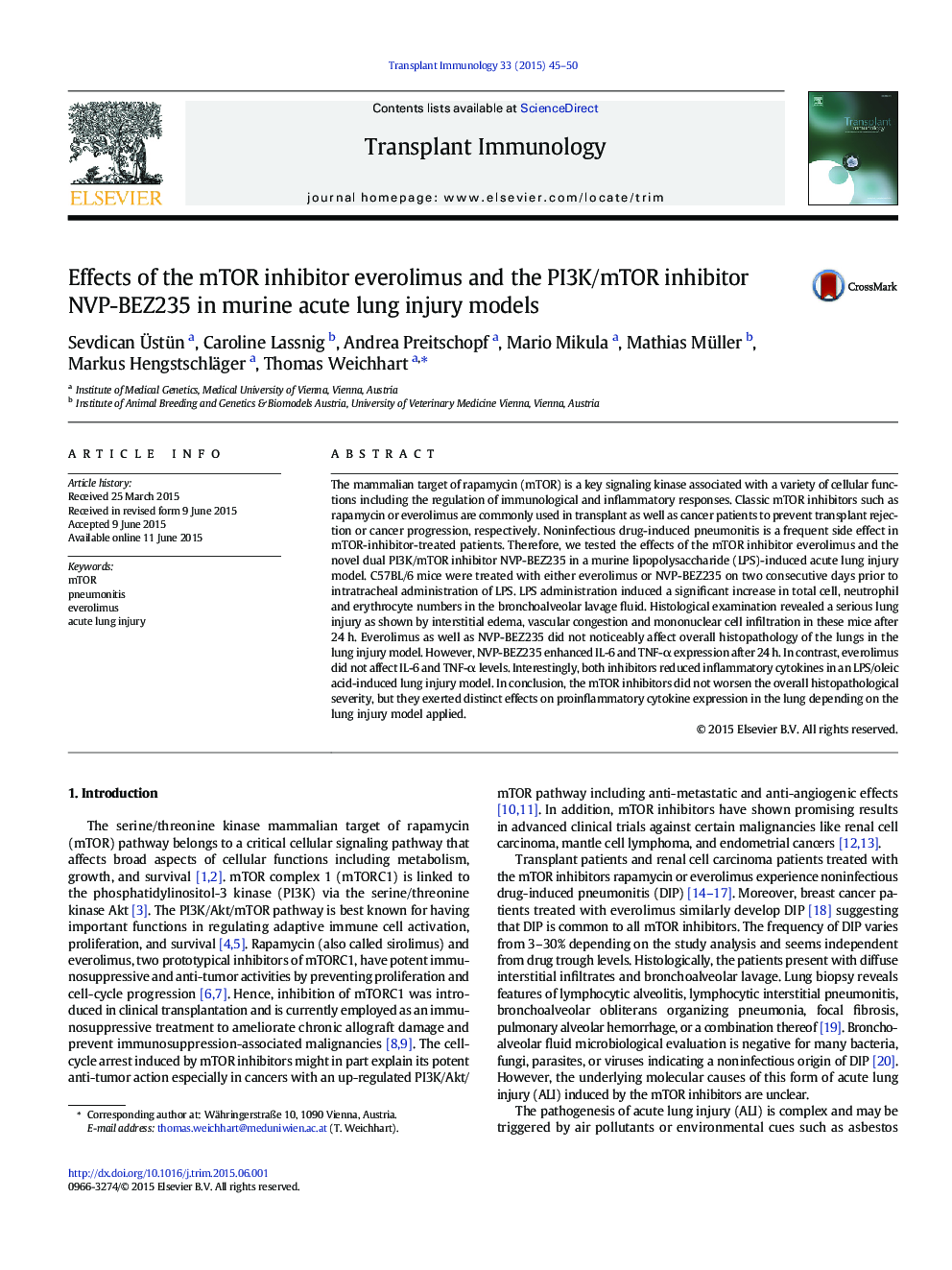| Article ID | Journal | Published Year | Pages | File Type |
|---|---|---|---|---|
| 3392051 | Transplant Immunology | 2015 | 6 Pages |
•Everolimus and NVP-BEZ235 do not worsen histopathological disease in two different acute lung injury models.•The mTOR inhibitors NVP-BEZ235 enhance IL-6 and TNF-α expression in an LPS-induced lung injury model.•Everolimus and NVP-BEZ235 reduce proinflammatory cytokines in an LPS/oleic acid-induced injury model.
The mammalian target of rapamycin (mTOR) is a key signaling kinase associated with a variety of cellular functions including the regulation of immunological and inflammatory responses. Classic mTOR inhibitors such as rapamycin or everolimus are commonly used in transplant as well as cancer patients to prevent transplant rejection or cancer progression, respectively. Noninfectious drug-induced pneumonitis is a frequent side effect in mTOR-inhibitor-treated patients. Therefore, we tested the effects of the mTOR inhibitor everolimus and the novel dual PI3K/mTOR inhibitor NVP-BEZ235 in a murine lipopolysaccharide (LPS)-induced acute lung injury model. C57BL/6 mice were treated with either everolimus or NVP-BEZ235 on two consecutive days prior to intratracheal administration of LPS. LPS administration induced a significant increase in total cell, neutrophil and erythrocyte numbers in the bronchoalveolar lavage fluid. Histological examination revealed a serious lung injury as shown by interstitial edema, vascular congestion and mononuclear cell infiltration in these mice after 24 h. Everolimus as well as NVP-BEZ235 did not noticeably affect overall histopathology of the lungs in the lung injury model. However, NVP-BEZ235 enhanced IL-6 and TNF-α expression after 24 h. In contrast, everolimus did not affect IL-6 and TNF-α levels. Interestingly, both inhibitors reduced inflammatory cytokines in an LPS/oleic acid-induced lung injury model. In conclusion, the mTOR inhibitors did not worsen the overall histopathological severity, but they exerted distinct effects on proinflammatory cytokine expression in the lung depending on the lung injury model applied.
